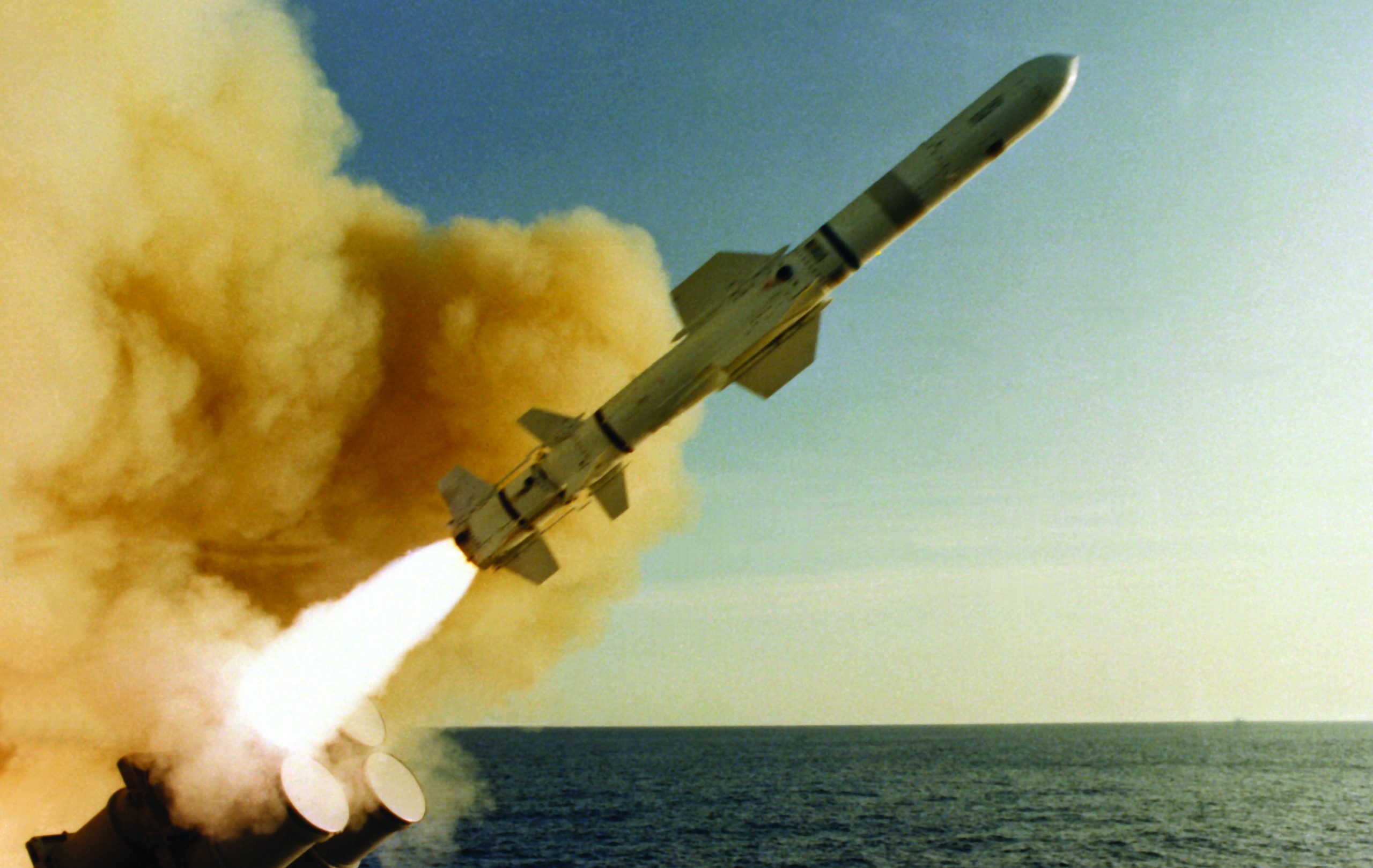The movement of warships in offensive and defensive operations has always been limited, and they often fight a lighter and faster enemy. Today the presence of long-range and accurate surveillance devices exacerbates the situation, by preventing the discreet movement of fleets, at least in limited seas such as the Mediterranean Sea. Therefore, ships had to be equipped with sensors that can provide early warning for any possible attack, as well as defensive or offensive equipment with a longer range than any potential threat. This study will discuss the requirements of these sensors and their specifications and advantages, in addition to passive interception and verification devices, while looking at the basic advantages that warships must have to do their job right
The threats that warships must defend against fall into 3 categories according to their point of origin, and those sources are Surface, Subsurface and Air.
Aside from subsurface threats, which are outside the scope of our study, surface and air threats countermeasures can be divided into three main groups:
1- Communication devices
2- Detection & acquisition devices.
3- Various weapon and guidance systems.

The science of electronic warfare takes into account all these devices, in dealing with all potential threats to effectively counter, intercept, detect and strike the enemy.
Electronic Warfare Threats
01
Surface, surface-to-air, and air-to-air communication networks: All efforts to intercept the enemy’s communications and locate their source must be done within the short round trip of the message, and deciphering these messages can be a valuable, albeit difficult, goal, however, it is always faster and easier to disrupt and jam such communications.
Aside from the very short radio waves, the frequency used in these communications ranges from a few kilohertz to a thousand megahertz.
02
Sea and air inspection radio: This device plays a vital role in detecting and analysing the vibrations of enemy devices, which enables the identification of enemy units and their location within the safe zone.
On the other hand, jamming enemy radios must be done with caution, because the enemy can glean specific information about the point of origin of such activities.
Inspection radars use waves ranging from 1 to 18 gigahertz and some advanced radars can operate instantly over a wide range of frequencies by using specialized equipment to quickly switch frequencies or waves with a special code system.
03
Missile guidance radios: The rapid detection and identification of anti-ship missiles are essential to the use of counter or disruptive measures, which eliminate the attacking missile or divert it from its original course.
In this case, as in all aspects of electronic warfare, equipment must be highly sensitive, accurate and have a fast response time.
In the face of such threats to warships, commanders must use a proportionate mixture of disinformation, obstruction and jamming.
The frequency used in missile guidance systems usually lies in the upper part of a very short wave, starting from 8 GHz and above, as frequency ratio is key in electronic countermeasures.
Furthermore, infrared devices are frequently used, due to their ability to cover several waves and their higher accuracy, which forces the enemy to increase the range of effectiveness of his defensive equipment.

Conclusions
The aforementioned points make it easier to draw the following conclusions and factors that must be applied when using electronic devices on warships:
01
Minimum radio communications: The use of radio communications and radar detection must be reduced to a minimum, which increases the importance of interception equipment as the only means of detection and warning missions.
This all stops as soon as the confrontation begins, for when the warship turns on all its all electronic devices the confused enemy is forced to spread out its counter activity among the various broadcasts and transmissions.
02
Limited use of jamming: The use of jamming devices must be limited to a short time before the enemy discovers the presence of the ship or it will risk giving the enemy plenty of information about the location of the ship.
Furthermore, the warship must collect the largest possible amount of accurate and continuous information about the enemy’s armament when the enemy engages with its electronic defence equipment before any countermeasures can be taken.
Electronic Support Measures
It is critical to equip warships with passive interceptor systems called Electronic Support Measures (ESM) for use in communications or non-communication transmissions, as these devices represent the only eyes and ears that the warship can use to explore the surrounding area in a secure manner, whether this area was hostile or not.
These devices can pick up on any emerging threat relatively quickly, however, they may confuse hostile with non-threatening broadcasts.
Moreover, these devices can identify the source of the intercepted signals, but cannot specify its range without complex calculations.
Aside from the inspection radio, some information can only be detected by ESM devices, in addition, it allows for continuous monitoring of the area around the ship and gives an immediate warning when any threat appears.
On the other hand, these devices generally collect information within the radar range or beyond, and therein lies the deciding factor, which is the advantage that ESM devices provide over inspection radars.
In other words, ESM devices must provide the longest time window between the moment it detects, analyses and identifies a threat, transmitting its information to the command centre, and the moment the enemy’s radar picks up the warship on its screens, and the longer this window, the better the chances of success for the defensive or offensive preparations such as performing evasive manoeuvres or firing missiles that cannot be detected by radar when they are launched.

Countermeasures
Anti-inspection radio countermeasures are the second most important tool in electronic defence, second only to ESM devices.
This part is more difficult to explain given the secrecy surrounding such devices.
Types of these countermeasures which can be employed through either the appropriate transmitters or by various passive means, fall into the following 4 categories:
Obstruction: Obstruction or brute force involves covering the ship’s radar signature with a signal similar to white noise, which requires powerful transmitters operating on a continuous wave. Perhaps the most important basic requirement for obstruction devices is the power of the antenna transmitting concentrated signal towards the hostile radar. Given that speed and accuracy are important, this usually involves transmitting several different layers of oscillations to prevent the enemy from picking up the ship’s radar signature, which makes the level of technology used in obstruction a deciding factor.
Deception: As indicated by its name, deception aims to mislead the enemy’s radar operator or equipment by providing false information regarding the range or direction, thus losing the target. These devices are usually used against enemy fire control devices and anti-ship missile guidance radar.
Disinformation: Disinformation usually requires the use of more than one type of machine that makes the enemy lose his target and replaces it with a decoy.
Jamming: Jamming involves flooding the enemy’s radar screen with a series of false targets that resemble the correct target, and even though jamming may not be sufficient to fully cover the primary target, it makes identifying it very difficult. This method is more effective when the jamming broadcast is sorted automatically and not by an operator since machines are far less capable of analysing and differentiating the false targets from the real ones, as these machines become confused if the total number of targets (real and fake) exceeds its original design capability.
Therefore, radar and other equipment must be developed together, because one must assume that the enemy’s equipment is technically as advanced as his.
Elements of maritime electronic warfare
Coordination is a key element in maritime electronic warfare, and that means the full coordination among electronic devices and between these devices and the ship’s command.
For instance, some complex operational methods often lead to chaos and hesitation in the exchange of information between the various elements, and such methods were subject to criticism because they waste precious time between detecting and responding to the threat (20-30 seconds).
The significance of that problem became apparent when it became clear that the electronic system was not much different from other devices on board the ship, so it made no sense to continue operating the inspection devices far away from the ship’s command centre.
The modern concept now dictates that inspection devices must detect, analyse and pre-filter electromagnetic transmissions before forwarding this information to the operations centre ASAP to compare it with information received from other devices, thereby forming a clear picture of the situation.
On the other hand, it is unnecessary for the inspection devices to send information such as the rate of oscillations, their frequency and such to the operations centre, because while this type of detailed information is essential to determine the identity of the target, it is irrelevant to the operator tasked with building a picture of the tactical situation, especially given the very limited time he has to analyse the information and send it to the operations centre.
For instance, if we assume an average broadcast density of 20 consecutive transmissions in the inspection area, and that each transmission requires three seconds for analysis and transfer to the operation centre, then forming the full picture would require 60 seconds, which is far too long.
If a sudden and severe threat emerges, a maximum of 3 or 4 seconds have to be enough time for the deployment of anti-ship missile countermeasures.
Therefore, the use of a computer with the appropriate processing power in the exchange of information between the inspection devices and the operations centre is a given if we want to get the best coordination between the inspection equipment, the operations centre and all the other equipment on board the ship.
The use of modern technology in automatic information extraction enables the formulation of a clear picture of the ship’s surrounding and that picture becomes the focal point of the commander and the equipment at his disposal.
Thus, the commanding officer in the operations centre decides what effective measures should be taken to confront a given threat, this means that the electronic instruments table in the operations centre has to have features designed to relay orders and target designation to other critical countermeasure facilities, this also highlights the need to use an advanced computer to transmit the necessary information to the countermeasures equipment ASAP.
This computer must be equipped with suitable defence software that can defend against any kind of threat that emerges.
In other words, coordination is fundamental to any electronic warfare, as it ensures the continuous flow of information and orders, and the decision-making process always falls to the captain of the ship or the officer who is assigned to lead the military operations.
» By: Dr Moeen Ahmed Mahmoud (researcher in political & strategic affairs)













